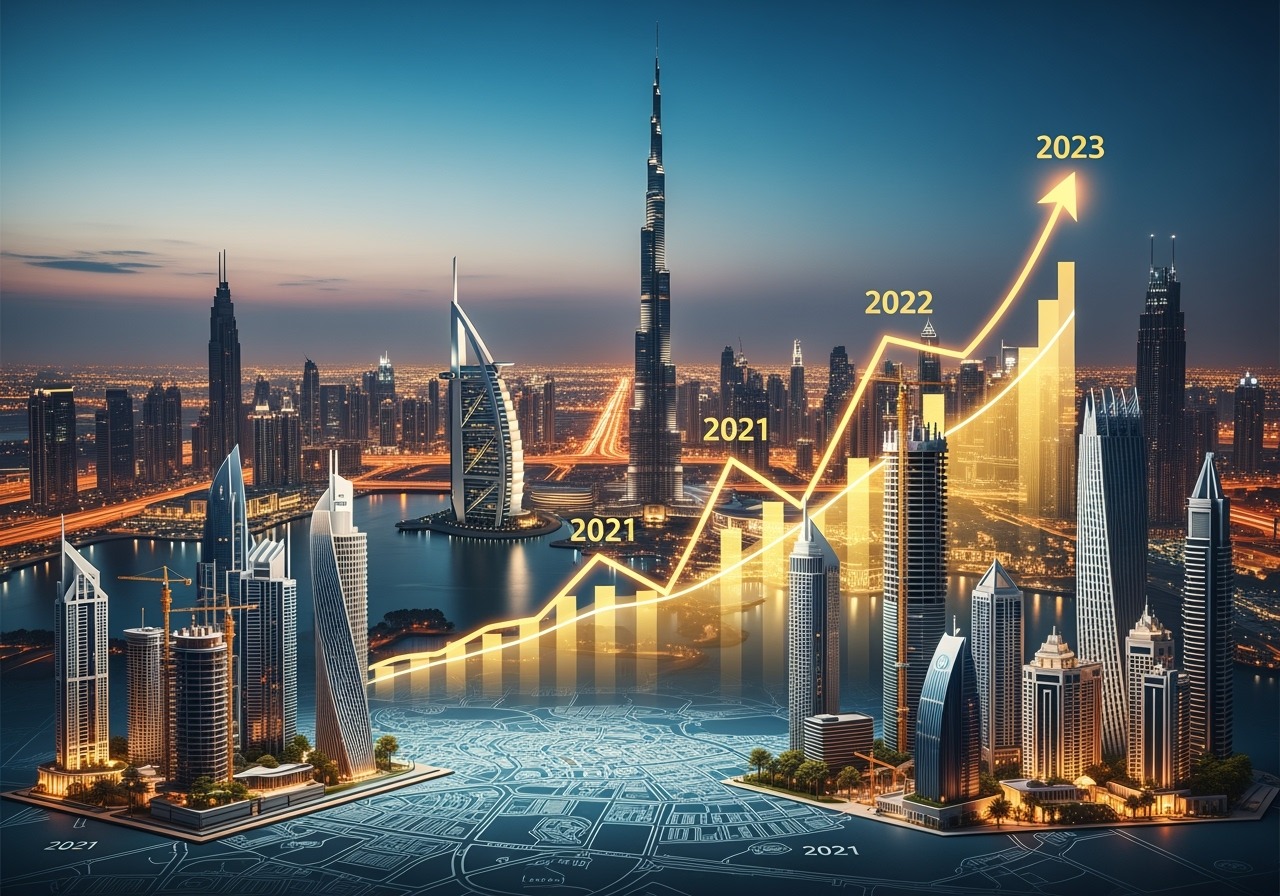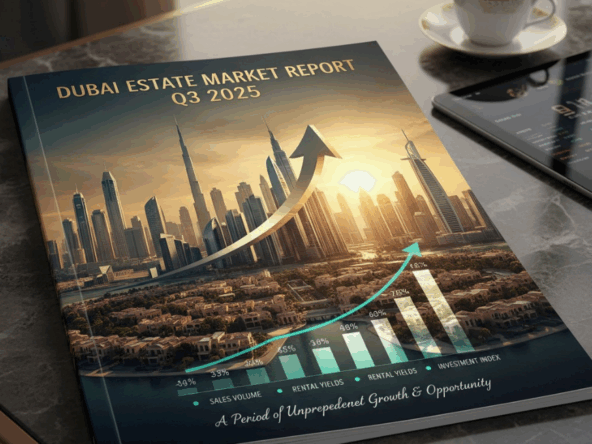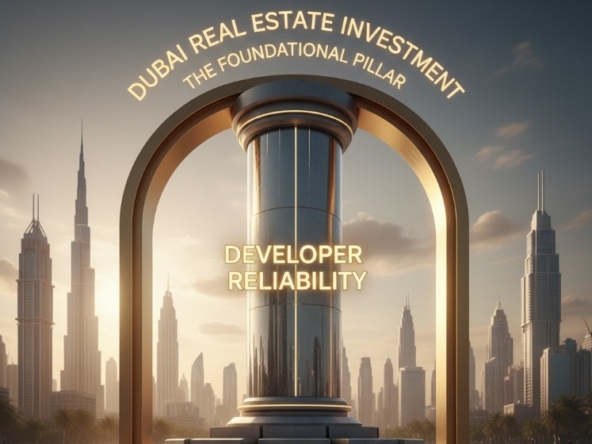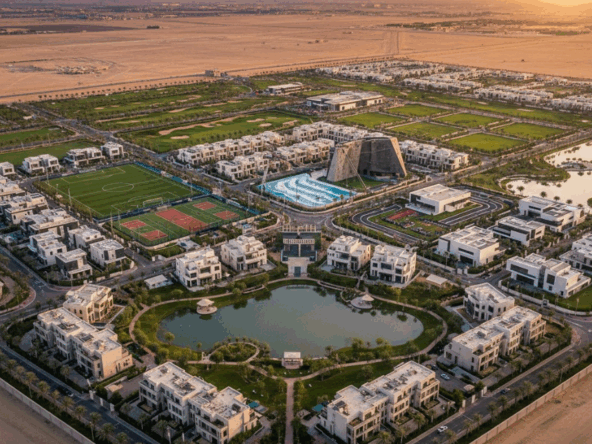Will Oversupply Cool Dubai’s Soaring Prices? Forecasts & Investment Risks for H2 2025 and Beyond
Market Analysis | August 11, 2025
For the past three years, the Dubai real estate market has been defined by a singular, powerful narrative: relentless growth. Record-breaking transaction volumes and soaring prices have made the city a global outlier. However, as we enter the second half of 2025, a familiar question, one that has haunted Dubai property cycles for decades, is resurfacing with urgency: Will an impending wave of new properties finally cool this red-hot market?
The frenetic off-plan sales of 2022-2024 are now translating into a massive pipeline of completed units scheduled for handover. The answer to the oversupply question is not a simple yes or no. Instead, it signals a critical maturation phase for the market, where a blanket approach to investment will no longer suffice.
The Argument for a Market Cooldown: The Supply Side
The numbers themselves present a compelling case for a market recalibration.
- The Handover Pipeline: Market data indicates a significant volume of residential units—estimated between 35,000 and 45,000—are slated for completion and handover in H2 2025 alone, with a similar or even greater number projected for 2026. This is the direct consequence of the recent off-plan boom and represents one of the largest infusions of new stock in the city’s history.
- Localized Saturation: This new supply is not evenly distributed. Certain master communities and districts with a high concentration of new apartment towers will experience intense competition. Landlords and sellers in these specific areas will likely need to adjust their price expectations to attract tenants and buyers, potentially leading to localized price stagnation or minor corrections.
- The “Flipper” Effect: A portion of off-plan units were purchased by short-term investors intending to “flip” them upon completion. As these properties are handed over, many will enter the secondary market simultaneously, creating a shadow inventory that competes directly with both developer stock and other resellers.
The Counterargument: Unprecedented Demand Dynamics
While the supply figures are daunting, they are being met by demand forces that are fundamentally different and more robust than in previous market cycles.
- Aggressive Population Growth: This is the single most important factor absorbing new supply. The Dubai Economic Agenda (D33) and the city’s magnetism for global talent are fueling population growth at a rate that consistently outpaces initial forecasts. New residents, from skilled professionals to entrepreneurs, all require housing, creating a deep and continuous well of end-user and tenant demand.
- The Golden Visa and Policy Reforms: Government-led visa reforms have been a game-changer. The 10-year Golden Visa, tied to property investment, has anchored capital in the city for the long term. It has transformed a significant portion of buyers from transient speculators into long-term stakeholders, reducing market volatility.
- Safe-Haven Allure: Continued geopolitical and economic uncertainty in other parts of the world reinforces Dubai’s status as a stable and secure hub for capital and families. This continuous inflow of foreign investment provides a strong floor for market prices, particularly in the premium segment.
Forecast for H2 2025 and Beyond: A Market of Tiers
Instead of a market-wide crash, we anticipate a market normalization and the emergence of a multi-tiered system. The era of uniform, double-digit growth across all property types is likely drawing to a close.
- The Prime & Luxury Segment: Properties in established, prime locations (e.g., Palm Jumeirah, Dubai Hills Estate, Downtown) and unique, branded residences will remain highly resilient. Supply in this tier is inherently limited, and demand from high-net-worth individuals is less susceptible to interest rate fluctuations. This segment will continue to see steady, albeit more moderate, capital appreciation.
- The Mid-Market Segment: This is where the effects of new supply will be felt most. Areas with a high density of similar, non-differentiated apartment buildings may experience price plateaus and increased vacancy rates. The key to success here will be the quality of the specific building, its amenities, and its proximity to key infrastructure.
Overall Trajectory: We forecast a transition from the frenetic price growth of 15-25% seen in previous years to a more sustainable and healthy 4-8% annual growth rate for the market as a whole through 2026.
Key Investment Risks to Monitor
For investors navigating the market from H2 2025 onwards, a strategic, research-based approach is critical. Key risks include:
- Micro-Market Oversupply: Do not “buy the city.” Scrutinize the specific sub-market. Analyze the number of upcoming handovers in the immediate vicinity of a potential investment.
- Rental Yield Compression: If rental price growth flattens while property values remain high, the percentage return on investment (rental yield) will decrease. Investors focused purely on income may find returns less attractive than a year ago.
- Global Economic Headwinds: While Dubai is resilient, a significant global recession could eventually temper the flow of foreign investment, impacting overall market sentiment and transaction volumes.
Conclusion: From Speculation to Strategy
The Dubai property market is not heading for a 2008-style collapse. It is maturing. The powerful demand drivers, led by population growth and strategic government policy, are strong enough to absorb the majority of the incoming supply.
However, the market is undeniably shifting. The “buy anything and it will fly” mentality is over. The second half of 2025 marks the dawn of the strategic investor’s market. Success will be found not by chasing yesterday’s returns, but by identifying quality assets in prime locations, understanding the specific supply-demand dynamics of a chosen community, and focusing on long-term value over short-term speculative gains. The boom isn’t over, but it’s getting smarter.
Let’s match you with the perfect property , Contact us.




